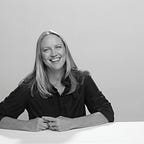Thomas Pynchon: Conspiracy Theorist
Thomas Pynchon writes the perfect guide to paranoia in The Crying of Lot 49(published in 1965). His gutsy and self-reliant heroine, Oedipa Maas (more about Pynchon’s fabulously funny names later) is named executor of the far-flung estate of an ex-boyfriend. Pierce Inverarity had his fingers in pies of all sorts, including a possible shadow group fighting the monopoly of the US Mail system over mail delivery. The struggle to control the mail dates back centuries (it really does: Pynchon is not making this part up) and the Trystero conspirators are gearing up for an overthrow, offering clandestine methods of getting mail around. Or are they? That’s where the paranoia comes in.
As Oedipa finds out more and more about seemingly unrelated (but are they?) subjects such as the history of postal subversion (including the philatelical dimensions of forged stamps bearing small, incongruous details in black), and the bones of GIs left at a the bottom of a lake in Italy during World War II and then brought back to the United States to serve as interest for scuba divers in a lake built and outfitted by Inverarity, and the history and performance of Jacobean revenge plays (including one play considered so pornographic and destabilizing that the Vatican keeps it locked up in its library — another paranoid conspiracy waiting to be written) and resurgent Nazism in San Francisco (not so paranoid, after all), we are as drawn into the twisted story of Inverarity’s schemes as she is, and left with the same question: has he created the whole paranoid conspiracy to punish Oedipa or is it a real conspiracy that he was a part of or are all the concurrent acts and facts just coincidences? And if you cannot understand a thing I wrote in this paragraph, don’t blame me: read the book.
The book was written over forty-four years ago and yet it not dated. The California he writes about is perhaps a bit more innocent and open-spaced than now, but the groundwork for the future is being laid in spiraling real estate developments, spreading smog, and disconnected persons seeking connection, even if it is only the most paranoid grasping for a connection that does not exist.
However, there is a noted difference in The Crying of Lot 49 in the 1965 perspective on the Holocaust and World War II, and in today’s. In 1965 many survivors and perpetrators of the holocaust were still alive, and WWII was the war people still talked about as a participatory event. It was not an academic discussion of genocide and war, and Pynchon makes the war and the genocide horrible and immediately relevant to his characters. In a way, the characters are seeking to distance themselves from that history, and aligning themselves with an even older history of the struggle against repression while at the same time flying on the balloon of the sixties, trying to get high and find themselves and get laid.
I loved how Pynchon uses the 1960s backdrop for his naming of the characters. Pynchon is a timely and sophomoric (but still funny) version of Dickens with his Oedipa Maas (sometimes called “Oed” and sometimes just “Edna”), married to Mucho Maas; we also meet Manni Di Presso, Dr. Hilarius (a Freudian shrink), Stanley Koteks, Mike Fallopian, Genghis Cohen (who calls Oedipa “Miz Maas”), and so on and so on. Pynchon uses silly humor, slapstick, and sly inversions of reality to hold the readers’ attention and it all works. The plot of The Crying of Lot 49 is crazy but Oedipa holds it all together, works out all the kinks and twists for me, and makes me a believer.
Our Oedipa is an honest and serious girl (she does have some fun in a very funny scene of undressing layers upon layers); she is also an optimist and as dogged as a pit bull. By the end of the book, she accepts paranoia as a necessary state. And she is right, after all. Better to question and wonder, than to be complacent and therefore, unwittingly compliant in the conspiracy. What conspiracy? Take your pick, there are many out there, so keep your eyes open and your brain open, and your options, open. Great good comes from reading great books.
